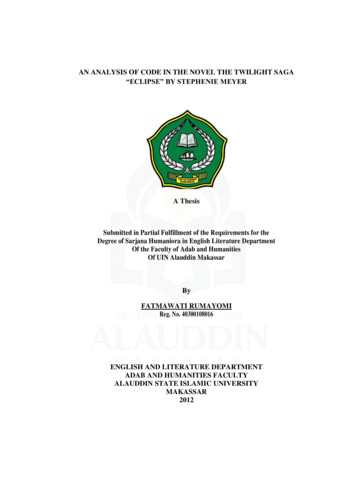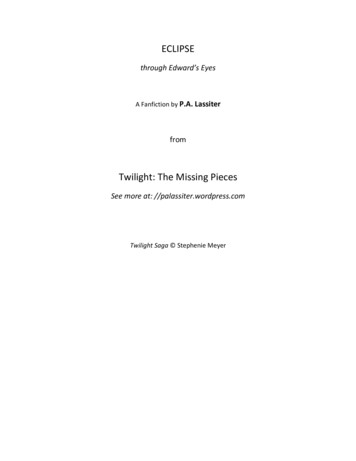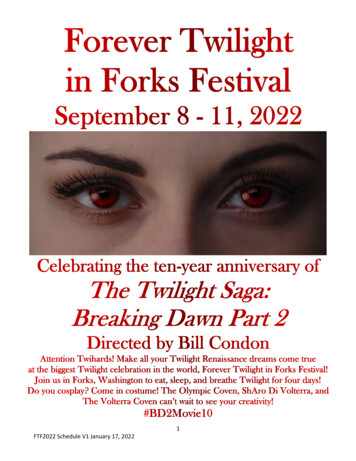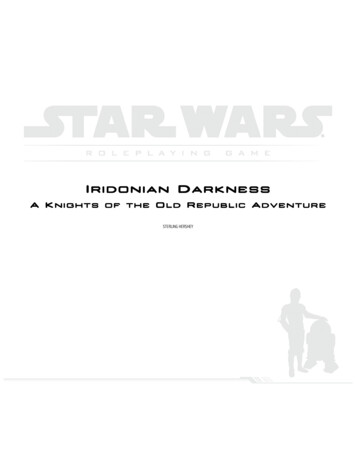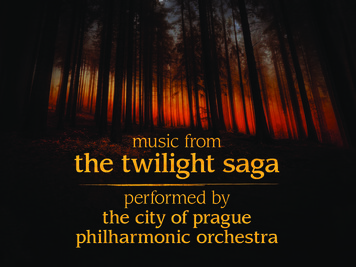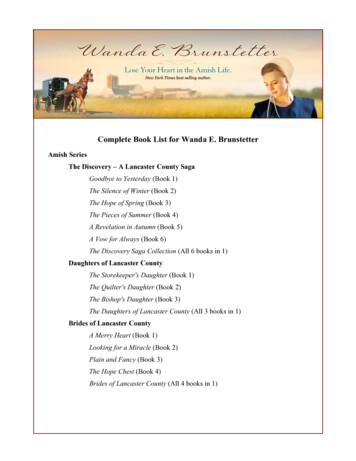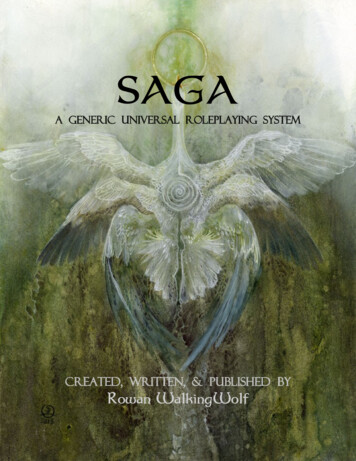
Transcription
SAGAa GENERIC Universal Roleplaying Systemcreated, written, & published byRowan WalkingWolf
CONTENTSLEGAL NONSENSE, WHAT IS SAGA?, WHAT SAGA IS NOT.1SHAMELESS SELF-PROMOTION, FUNDAMENTAL RULES.2GENRES & CAMPAIGN SETTINGS.3ATTRIBUTES & SKILLS, KNOWLEDGE, CHARACTER CREATION.5SIZE.13CLASSES, JOBS, PROFESSIONS.14RAISING & LOWERING STATS.15CONFLICT RESOLUTION.15GENERATING RANDOM NUMBERS, LUCK.18BONUSES & PENALTIES IN CONFLICT RESOLUTION.19REWARD POINTS: INCENTIVES FOR GOOD ROLEPLAYING.20BASIC COMBAT RULES.21ATTACKING & DEFENDING.24CONDUCTING MASS BATTLES & WARS.33STEALTH: SILENT MOVEMENT & CAMOUFLAGE.37MAGIC & PSIONICS.40HARMFUL AGENTS & PHYSICAL NEEDS.53WEAPONS & ARMOR.54EQUIPMENT.63INDEX OF CONTENDING STAT ROLLS.64NPC & ENEMY TEMPLATES.68CHARACTER SHEET.71
LEGAL NonsenseSaga (5th edition) is published in 2015 under a Creative Commons Attribution-Non-Commercial 4.0international license. For those with respect for copyright laws, this means you're free to copy and makederivative works of Saga for non-commercial purposes. Try to sell this, and I'll hunt you down, capitalistswine! For everyone else who doesn't give a damn about copyright laws: this work is Anti-Copyright. Dowhat you will, provided it's not for profit. Plagiarize, steal, reprint, republish, redistribute!What Is Saga?Saga is a free traditional pen and paper roleplaying game, written by a veteran gamer and overt anarchist.This system is set apart from conventional RPGs by several unique traits. The Saga system is universal,meaning it can be used to explore any gaming genre or campaign setting. It is also rules-light and focusedon storytelling rather than statistics and point counting, meaning that the system is primarily narrative innature. It is not a diceless system, but dice do not dominate gameplay in a Saga adventure.All you need to begin playing is some paper, a writing implement, a group of 3 or more friends, and at leastone person willing to take on the role of Narrator/Storyteller. You'll also need a variety of polyhedral dice,depending on which rolling method you choose. A handful of d10s (ten-sided dice) is essential, thoughoptimally every player and the narrator would each possess at least 5 d10s. A d6 (six-sided die) is alsonecessary in certain circumstances, such as luck and randomization. Play groups may also wish to acquireother optional dice, such as d4s, d8s, d12s, and d20s. These aren't necessary, but could potentially be usefulin certain random generation situations. Once these things are assembled, look over the rules and you'reready to begin.What Saga Is Not: a Note onStereotypes in Roleplaying GamesSaga is NOT a stereotypical roleplaying game. This game seeks to abolish harmful, nonsensical stereotypesso commonly found in storygaming. You're surely familiar with such type-casting: all Dwarves are Scottishaccent having, beer-drinking, bearded, axe-wielding miners, while Elves are all lithe archers who live in andlove the woods. Or, worse yet, Orcs are all stupid, evil, hulking brutes whose only love in life is destruction.Even beyond these things, the idea that all fantasy worlds must have Dwarves, Elves, and Orcs is itself a badstereotype.Similar stereotypes apply to character classes as well in the form of ridiculous restrictions. You're a thief,therefore you can't wear heavy armors or use certain types of weapons. Or, you're a magic user so youcan't wear any armor or use anything but staffs as weapons. Or, you're a warrior, so you can't also be amagic user, or thief, or chef, or all of the above. Or, most harmful, you're a fantasy game character, thereforeyou must be a warrior or thief or magic user.Stereotypes are also often found in adventures themselves. What else is there for characters to do but crawlthrough dungeons and kill things? Are you a warrior? Kill things. A mage? Use magic to kill things. A thief?1
Backstab baddies in the dungeon and kill them. While this system seeks to create a deadly and believablecombat system, it is NOT combat focused. The idea that PCs exist only to do battle is absurd.Saga has no such idiotic stereotyping. Surely, some Elves must perform functions other than frolickingthrough the woods with bows killing things, or Elvish society would very quickly collapse. The same goes forDwarves and their mines – where would Dwarven society be without farmers or hunters, craftspeople,diplomats, magic users, and other non-miner non-combatants? Certainly, not all Orcs are evil vile warriorswho love to kill, or their society, too, would fall apart very fast.When creating characters and playing Saga, please be creative and avoid these pitfalls of fantasy gaming. Ifyou want to be a thief who wears noisy metal armor, you'll suffer the consequences, but by all means do it.If you want to be a brilliant Orcish poet and orator, able to lead and convince others, all the better. Break outof these harmful molds and your gaming adventures will surely be richer.Shameless Self-promotionRoleplaying games are among of my deepest passions, but they're certainly not my only one. Besides all thefree Saga roleplaying material, I also write, edit, publish, and distribute radical literature. Many of my otherzines focus on primitive skills, plants, and anarchist/feminist/primitivist theory. I also occasionally dabble infiction, and I enjoy republishing the works of other folks that I find compelling or spot-on. As with the Sagaroleplaying supplements, all the zines and literature I publish are absolutely free and available via theinterwebnets at: yggdrasildistro.wordpress.com.Also, check out my political blog at: coyoteandwolf.wordpress.com.Fundamental Rules & ConceptsAt its core, Saga is a storytelling game. Adventures using this system are run by a Narrator or Storyteller,who dictates the path the story takes and obstacles the player-characters (PCs) face. Players narrate theircharacters' actions, just as Storytellers narrate the actions of Non-player Characters (NPCs). Both Players andNarrators will occasionally roll dice to determine the outcome of conflicts between two or more forces.Like so many other systems, Saga uses dice rolling as a mechanic to resolve conflicts. This is true of ConflictsBetween Characters, such as one character firing a gun at another and the second attempting to dodge, ortwo characters arm wrestling. It is also true of Conflicts With Environment or Objects, as when a characterattempts to pick a lock, leap across a chasm, or walk across a tightrope. Conflicts of both kinds are resolvedas described in the section entitled Conflict Resolution.2
Genres & Campaign SettingsOne of the key concepts of this game is its universality. That is, Saga can be played in any universe,campaign setting, genre, or world. The choice of which genre to play in is left to the entire group to decide.Making such a decision is the first choice the group must make before creating characters and beginningplay. There is little distinction between genre and campaign setting, and the words are often usedinterchangeably. Genre is typically a broader term, referring to categories of play. Campaign settings, on theother hand, tend to be more specific and well-defined.Below is a list of campaign settings written by yours truly that are compatible with and written for the Sagasystem. This is not an exclusive or exhaustive list, however, as Saga is a universal system and can be adaptedto any campaign setting. All of these Campaign Settings can be found and downloaded for free leplaying-material/.SAGA Campaign SettingsTHE NAHMURG WASTES (POST-APOCALYPTIC)This setting is a post-apocalyptic North America – called Nahmurg by the inhabitants – that is heavilyinfluenced and based upon the CRPG Fallout series, the novel A Canticle for Leibowitz, the Mad Max moviesThe Road Warrior and Beyond Thunderdome, and the indie comic Wasteland. It also takes influences from greenanarchism, and the anticipation that this civilization will come crashing tumultuously down, as civilizationsalways do. Campaigns set in Nahmurg will focus on characters' struggles for survival in a grim and desolateworld.CHRONICLES OF MAGNAMUND (HIGH-FANTASY)This high-fantasy campaign setting is an adaptation of the world Magnamund from the famed Lone Wolfseries of gamebooks. Anyone who played roleplaying gamebooks in the 80s knows this series intimately.This setting is geographically quite similar to the original, though many flaws within that world have beenaltered and improved. (E.g.: there is no strict dichotomy between good and evil, the Kai Lords are no longerthe most important religious order, giaks are no longer all evil, and all the other racist stereotypes in the LoneWolf books have been removed.) This setting blends all the beloved high-fantasy tropes – magic use, adiverse pool of races and creatures, and a pseudo-medieval world – with a vast and comprehensive body ofunique nations and provinces, organizations, and power groups.BRAYTHMAR – OF RESISTANCE TO EMPIRE IN AN AGE OF BRONZE(HIGH-FANTASY BRONZE AGE)As the name suggests, this high-fantasy campaign setting concerns the resistance of traditional huntergatherer peoples to their world's first empire. This setting takes place in a land known as Braythmar, a landthat resembles ancient Mesopotamia. One Braythmari tribe, the Jakkiolenna, have conquered their neighborsand confederated themselves into a series of powerful city-states. This Empire, the Lennar Confederacy, isBraythmar's first civilization, and exhibits all the symptoms of this vile disease: slavery, centralized hierarchy,agriculture, the domination of the natural world, oppression of women and minorities, and the conquest ofthe indigenous. The native tribes of Braythmar are determined to continue their traditional existence. Formany, this means actively and violently opposing the Empire.3
THE HYBORIAN AGE(LOW-FANTASY, SWORD & SORCERY, WORLD OF CONAN)This campaign setting is based on the works of Robert E. Howard, creator of the legendary character Conanof Cimmeria. This is Conan's world, a pre-historical world of sword and sorcery, civilized villainy and barbarichonor. Empires strive to conquer the world, civilized peoples plot and murder, and the barbarians andtraditional peoples of this grim age fight for their survival. This setting is characterized by extreme violence,warfare, theft, drunken revelry, high adventure, and a touch of the arcane and otherworldly.ARCANUM – OF STEAMWORKS & MAGIC OBSCURA (STEAMPUNK, FANTASY)This campaign setting, which draws heavily from the computer game of the same name, is a unique blend ofVictoriana, steampunk, and high-fantasy. Arcanum is a world currently undergoing the beginning stages ofindustrialization, steam technology, and clockwork. It's also a world of traditional cultures, magic, and lostancient knowledge about the world's gods and goddesses. Arcanum is beset by dichotomies: Law vs. Chaos,Magic vs. Technology, Urban vs. Rural, Highborn vs. Lowborn, etc. This setting borrows heavily fromArcanum, the Thief series of video games, Planescape Campaign Setting for D&D, Neverwhere by Neil Gaiman,and the Saga fantasy campaign settings preceding it.NEVERWHERE (DARK URBAN FANTASY)This setting is a contemporary dark urban fantasy setting, based on the novel and BBC series of the samename by Neil Gaiman. In Neverwhere, every major city in the world sits atop an underworld unknown toand unexplored by the above-ground inhabitants. Monsters prowl, magic thrives, feudal political intriguesunfold, and all manner of unsavory peoples and creatures lurk in the gloom.MAGIC THE GATHERING (HIGH-FANTASY, M:TG)This campaign setting really needs no introduction nor explanation. It's a massive 300-page tome ofinformation about all the planes of existence and all the races and creatures who inhabit them in the Magic:the Gathering multiverse.Non-SAGA Campaign SettingsAs previously mentioned, Saga is a universal and generic system. It can (and ought to) be used to runcampaigns in every conceivable genre and setting. It works well with traditional favorites like ForgottenRealms, Shadowrun, Middle-earth/LotR, the Star Wars multiverse, etc., and can certainly run less popular orhome-brew settings as well. By using this system, unlike its many rules-heavy contemporaries, players arelimited only by their imaginations and desires.4
Attributes & Skills, Knowledge,Character CreationStatisticsCharacters in Saga have a number of statistics that describe their physical traits, skills, appearance, intellect,and life experience. These attributes and skills all have both a descriptor (adjective) and a numericalvalue (number). The descriptor is any colorful word that describes the level of achievement in the attributeor skill being described. The numerical value is used to determine the outcome of conflicts, as described inthe chapter Conflict Resolution. Descriptors and Numerical Dice Values correspond: the better the descriptor,the higher the die value.The sample chart below shows descriptors and their corresponding dice values. These are but a fewdescriptive terms. Narrators should encourage the use of maximum variety in descriptive language in thegame.Numerical Value12345678 DescriptorHorrible, Awful, Really Bad, Hopeless, Rotten, Atrocious, Crappy, etc.Poor, Lacking, Beginning, Novice, Inferior, Weak, etc.Fair, Average, Decent, Okay, Moderate, Mediocre, So-so, etc.Good, Talented, Adept, Apt, Superior, Strong, etc.Excellent, Superb, Amazing, Accomplished, Outstanding, etc.Masterful, Elite, Virtuoso, Gifted, Superlative, etc.Legendary, Heroic, Mythic, Epic, Herculean, Homeric, Fabled, etc.Superhuman, Supernatural, Otherworldly, Transcendental, Uncanny,Sorcerous, Godlike, Eldritch, Unfathomable, Divine, Arcane, etc.Most characters in a Saga campaign will have stats ranging between 1 to 5. This represents the full range ofaccomplishment for average humanoid characters. All mundane PCs and NPCs will have stats within thisrange, and will never exceed 5 in any of their attributes or skills. In strict mundane campaign settings (e.g.:the Modern World, Medieval Europe or Japan, non-magical Ancient World, etc.), statistics will rarely everexceed 5. This includes character stats, weapon and armor stats, and difficulty values determined by theNarrator.Characters in non-mundane campaign settings, and truly unique and gifted individuals in mundane campaignsettings, may have stats of 6 or rarely 7. A score of 6 represents the lifelong devotee, the master of hertrade, the head of the thieves' guild, the warrior whom all warriors aspire to be. This is the true master, moreskilled than all other typical humanoids.A score of 7 represents a skill or attribute that is the stuff of myth and legend. Hercules and Gilgameshwould have a Strength attribute of legendary 7. Legolas' Bow Skill is certainly a mythic 7. Conan wouldundoubtedly have a heroic 7 in Swordsmanship, as would Bêlit, his greatest love and companion. ArchmageGed of the Earthsea mythos definitely boasts a fabled 7 skill in Wizardry and Common Sorcery. Ilmarennen,5
first of all the iron-workers, would likely have an epic 7 in Smithing.6 is achievable by devoted characters. 7 is only available to legends and myths, heroes and heroines. A valueof 8 or greater in any statistic represents that which is superhuman or arcane. An 8 is the 3000-year-oldundead sorcerer, the spandex-clad superhero with mutant powers, gods, spirits, demons.There is no upward limit or ceiling to statistics, although in most Saga campaigns, players are not likely to seeor encounter anything above and 8, 9, or 10. Beyond this level of expertise lies the realm of almighty deities,benevolent and malevolent gods, and horrendous, insanity-inspiring Elder Things like Cthulhu andNyarlahothep. Such beings are so powerful that they rarely even need statistics, but it is conceivable thatsuch stats could come into play.The Descriptors listed above but a few examples. Players and Storytellers should feel free to use descriptiveterms that apply to whatever attribute or skill they're describing, and to the flavor of particular characters. Forexample, if a character's Strength has a value of 1, it could be called Wimpy or Feeble, but if that characterhas a Strength value of 5, they could be called Bruiser, or Ripped. The same variety of language goes for allother stats.Other statistics- the deadliness of weapons and the protective value of armor, the difficulty of performingcertain tasks, and so on- have similar values and descriptors. These are described in subsequent chapters.AttributesEvery character, including PCs and NPCs, has a few Attributes in common. Attributes are a character'sphysical and mental traits that do not involve the use of a skill. Each attribute can be called a number ofdifferent synonyms, and several of these are listed for each. The attributes in Saga are:ENDURANCE (CONSTIUTION, HEALTH)This attribute represents a character's immune system and general health. This is the body's ability to resistpoison, sickness, fatigue, exhaustion, dehydration, hunger, and extreme cold or heat. Endurance drops when acharacter is fatigued or ill. If this value drops to 0, a character is dead or has passed out from exhaustion.INTELLIGENCE (INTELLECT, BRAIN POWER, SMARTS)A character's ability to reason and learn; I.Q.SPEED (SWIFTNESS, QUICKNESS, REACTION, REFLEXES)How quickly a character moves, and how quickly a character avoids being hit.STRENGTH (POWER, MUSCLE, BUILD, PHYSIQUE)Raw power and ability to resist injury from physical damage.WILLPOWER (FOCUS, DRIVE, MENTAL INDEPENDENCE)This is a character's ability to focus and avoid distraction, and to resist psionics and other mental control.6
Attributes can increase and decrease with many factors: fatigue, damage, magic, etc. Serious injuries can havelong-term, lasting attribute penalties. Many such effects are described in later chapters.Skill GeneralizationsSkills represent a characters ability to do various things. Other than the physical and mental traits of acharacter, skills make up everything else about them. Characters all have a number of skill generalizations incommon, though characters choose to specialize in specific skills within these sets and thus distinguishthemselves from other characters. If characters do not have specific skills that relate to any given conflict,they use the value and descriptor of the skill generalization that applies. The skill areas in Saga are as follows:AcrobaticsJumping, running, swimming, climbing, tumbling, cartwheeling, and otherwise moving fall into this category.AnimalsRepresents a character's ability to take care of animals, use animals for labor, and ride animals for sport, pleasure, or battle. Alsoshows how well characters tame and calm wild animals, and how well they train tamed animals.ArtA character's ability to create pleasing or interesting art. Includes painting, sculpting, tattooing, culinary arts, spraypainting, etc.BushcraftIncludes all wilderness survival skills, like fire starting, knot tying and rope skills, foraging, navigation, shelter building, skinning andtanning hides, and so on. Ability to stay alive with ancient skills and to live off the land in the wilderness.Combat, meleeShows how well characters attack and defend with melee weapons like swords, daggers, lawnmower blades, axes, golf clubs,baseball bats, and so on. Also shows how well characters use shields to avoid attacks.Combat, rangedHow well a character attacks with distanced weapons like pistols, rifles, bows, crossbows, slings, and the like. Also shows acharacter's ability to attack with thrown weapons like javelins, throwing stars, and thrown knives.Combat, unarmedThis is a character's ability to brawl and to grapple, using punches, kicks, elbows and knees, headbutts, armbars, chokeholds,jointlocks, and so on. Also a character's ability to defend against physical attacks.CommunicationA character's capacity to charm, lie, swindle, comfort, convince, embolden, intimidate, and inspire through communication. Alsoused for haggling and bartering.CourageA character's ability to withstand fear and terror.Crafting & RepairThe ability to make a huge number of items, from simple hand tools, to furniture, to bows, to swords and armor, to nets for fishing.Also the ability to fix broken things. If it can be made or fixed by one person, it falls into this category.7
DetectPerceptual abilities, like spotting a hidden attacker, finding a hidden trap, smelling or tasting hidden poison, detecting the presenceof another, detecting lies and half-truths.Entertainment & PerformanceShows a character's ability to entertain others through song, dance, storytelling, acting, juggling, and telling jokes. Also a character'sability to play music.Gambling & GamingThe ability to win at games, including gambling games like poker, blackjack, and hot dice, and physical games like basketball,tennis, and other sports.Magic & PsionicsA character's ability to use lifeforce magic and psionics if they exist in the chosen campaign setting or world, and the ability todefend against magic and psionics from others.MedicineA character's ability to tend wounds. This covers the use of first aid kits, prescription industrial medicine, herbal medicine, doctoringskills, stitching up wounds, performing surgery, and so on. Also used to diagnose illnesses and maladies.Science & GadgetsThis represents the ability to work with science equipment and methods, including the use of computers, cell phones, and otherpost-industrial garbage.StealthShows a character's ability to sneak, hide, camouflage herself, walk silently, pick pockets, arm and disarm traps, shoplift, etc. Abilityto avoid detection.Vehicles & MachinesThe ability to pilot a number of moving craft, including everything from simple carts and wagons, to bicycles, to automobiles andmotorcycles, to tanks and ships, to space shuttles and fighters. Ability to engage in combat in vessels capable of fighting. This isalso the ability to activate and operate heavy machines, like cranes.Skill SpecializationsAs mentioned above, characters can specialize in specific skills that fall under the areas previously listed.There are far too many individual skills to innumerate them all, but following below is a sizable sample ofskills that fall under each of the preceding categories. Players and Storytellers are welcome to add to theselists. For example, a PC in a recent campaign chose "Not From Around Here 1" to describe hiscommunication skill with foreigners! This is excellent roleplaying.When creating a character, as detailed in a following section, Players may choose to assign any legal valueto these skills, regardless of the area they fall under. This is because the areas represent the general capabilityof characters in all the skills within each area. Thus, some skills must be above and below the value for thearea itself. For example, a character with Mediocre 3 skill in Bushcraft might have Excellent 5 Fire Buildingand Novice 2 Tracking. Distinguishing these two skills shows that, while the character is average in bushcraftskills in general, they are an accomplished fire maker and a not-so-good tracker. Assigning values such asthese isn't necessary, but it adds great flavor and depth to characters and is highly encouraged.8
When a character is engaged in any attempt that uses a particular skill, if that character has the specificspecialized skill involved in the attempt, they use the value and descriptor of that skill in the attempt roll(described in the Conflict Resolution section). Otherwise, if a character doesn't have a specialized skill relatedto any given attempt, that character uses the value/descriptor of the skill area instead.For example, if Fadros is attempting to hit an opponent with a sword, but doesn't have the specialized skillLong Blade, his player uses Fadros' Combat, Melee value/descriptor for the attempt. On the other hand, ifFadros does have a value and descriptor for Long Blade, any time he attacks with a sword or other longbladed weapon, his player uses this value/descriptor for the attempt.Another example: a character is being attacked in melee combat and is blocking with a shield. If thecharacter has no specialized Shield skill, the controlling player uses the character's Combat, Melee value inthe attempt. If the character does have a Shield value, the player uses this value instead.Again, any time a character has a specialized skill that pertains to an attempt, the Player/Narrator controllingthe character uses the value of the specialized skill in the attempt roll, not the value of the general skill area.AcrobaticsJumping, swimming, climbing, tumbling, cartwheeling, hurdling, mantling, contortion or escape artist.AnimalsAnimal riding (can be further specialized by animal, like Horse Riding, Bull Riding, Fictional Animal Riding, etc.), AnimalTaming, Animal Training, Animal Care, Animal Calling (further specialized by animal).ArtBody Piercing, Brew, Calligraphy, Drawing, Sculpting, Painting, Photography, Prepare Drink, Prepare Food,, Stenciling orSpraypainting, Tattooing.BushcraftCordage/Rope Making, Fire Building, Fishing by Line, Fishing by Net, Fishing by Spear, Foraging, Knot Tying, Navigation, ShelterBuilding, Skinning, Tanning, Tracking.Combat, meleeAxes, Blunt Weapons, Long Blades, Polearms, Shields. Short Blades,Combat, rangedAssault Rifles & Sub-machine Guns, Big Guns, Bows, Crossbows, Pistols, Rifles, Slings, Throwing Axes, Throwing Knifes, ThrowingSpears, Throwing Sticks, Throwing Stones.Combat, unarmedBrawling, Grappling.CommunicationCharm, Convince, Empathy, Haggling/Bartering, Intimidate, Leadership, Lie, Lip Reading, Gesturing/Sign Language.CourageCourage Toward Dragons, Courage Toward Humanoids, Courage When Facing Death, Courage in the Dark, Courage AgainstDemons, Courage In the Water, Courage Toward Water Creatures, Courage Toward Demons/Spirits/Deities, etc.9
Crafting & RepairBlacksmithing, Bladesmithing, Bowyering, Candle Making, Carving, Coppersmithing/Bronzesmithing, Fletching/Arrow Making,Gem Cutting, Glassworking, Leatherworking, Spinning, Stonemasonry, Tailoring/Sewing, Weaving, Welding.DetectDetect Lie, Detect Hidden Motives, Detect Hidden Objects, Detect Hidden People, Detect Traps, Eavesdropping, Smell Poison,Taste Poison.Entertainment & PerformanceActing, Dancing, Juggling, Joke Telling, Musical Instrument (specialized by instrument, e.g.- Drum, Flute, Fiddle) Singing,Storytelling, Ventriloquism.Gambling & GamingCard Games (by individual game, e.g.- Poker, Blackjack, Magic the Gathering) , Dice Games (by individual game), Physical Games(by individual game)Magic & PsionicsSee the Magic & Psionics section for schools and disciplines.MedicineBandaging, Bone Resetting, Diagnose, Prescribe/Use Civilized Medicine, Prescribe/Use Herbal Medicine, Stitching,Surgery/Operate.Science & GadgetsCell Phones, Computers, Explosives, Hacking/Cracking, Phone Taps, Wiring.StealthCamouflage/Hide, Disguise/Impersonate, Forgery, Lock Picking, Pickpocket/Steal, Silent Movement, Shoplifting, Trap Arming &Disarming.Vehicles & MachinesCarts, Wagons, Canoes, Galleons, Catamarans, Automobiles, Bicycles, Motorcycles, 18-wheelers, Tanks, Commerical Aircraft,Fighter Jets, Space Shuttles, Space Fighters, Space Bombers, Space Capital Ships.KnowledgeKnowledge represents what a character knows, and acts very similarly to attributes and skills. All knowledgethat PCs and NPCs have must also have a descriptor and dice value. For example, a preacher might choosethe following knowledge: Christian Theology Excellent 5, The Bible Excellent 5. When choosing knowledgefor characters, try to pick subjects that aren't covered by skills and attributes. For example, a character doesn'tneed knowledge of swordsmanship, as this is represented by the Combat, Melee skill area and the LongBlade skill. However, a character might have Knowledge of Swords, Sword History, etc.Characters can be asked to roll knowledge versus difficulty any time their memory or use of such knowledgecomes into play. Characters can also roll knowledge of a subject versus another character's knowledge of thesame subject to see who knows more about a particular topic or to see who remembers it first. Basically, anytime knowledge can be used and no attri
What Is Saga? Saga is a free traditional pen and paper roleplaying game, written by a veteran gamer and overt anarchist. This system is set apart from conventional RPGs by several unique traits. The Saga system is universal, meaning it can be used to explore any gaming genr

